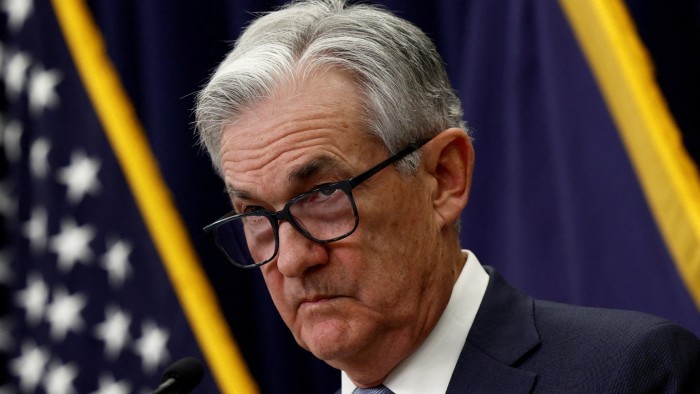The Fed needs to stop raising rates

Roula Khalaf, Editor of the FT, selects her favourite stories in this weekly newsletter.
The writer is a philanthropist, co-founder of Pimco, and author of the 2022 memoir I’m Still Standing, Bond King Bill Gross and the Pimco Express.
“Love lift us up where we belong,” rings the theme song from the 1982 film An Officer and a Gentleman. Substitute the “Fed” for “love” and you have the theme of 2022-2023, with the global central bank’s captain, Jay Powell, doing the heavy lifting.
We need to renormalise the cost of money. Most of us would agree to this. But how high is that and for how long? Among economists, Larry Summers suggests as high as 6 per cent for the Federal Reserve’s target funds rate but Jeremy Siegel suggests 3 to 4 per cent is enough. As Fed chair, Powell strongly affirms we will be lifting higher from the current 4.25 to 4.5 per cent target, but warns that the peak in rates and its duration will depend on data in the months ahead.
I suggest several clues to this conundrum. First, aside from the critical focus on US employment, global growth and financial conditions, it is important to analyse what level and pace of real interest rates have historically slowed economic growth in past cycles and led to acceptable inflationary targets.
I emphasise real as opposed to nominal yields because the Fed’s and other central banks’ dream outcome is the infrequently mentioned “r-star” — the “neutral” level of overnight money rates net of inflation that is consistent with stable economic conditions.
This is perhaps too complex for widespread public use and is hard to calculate based on forward assumptions of the consumer price index. The 0 per cent or less rate that we saw in some recent years is also an anomaly given the trillions of dollars created under quantitative easing programmes.
Nonetheless, apart from this period, historical statistics over the last several decades would show that on average, an r-star in the US of 2 per cent would be enough to flatten growth and raise unemployment. And an r-star of 0 per cent or less would be enough to accelerate inflation above central bank targets.
It’s the 2 per cent that forecasters seem to pass over in their analysis. I would argue that with the Fed’s inflation target of 2 per cent and with the targeted current fed funds rate at 4.25 to 4.5 per cent and going higher in February, we are already at the optimum r-star rate and will probably stay there for some time if — and a big if — inflation appears to be approaching acceptable levels, even above 2 per cent.
The danger of overshooting and the need to have a forward-looking monetary policy argue strongly for this. The Fed should now stop raising rates and wait to see if the punch bowl has been sufficiently drained.
Second, however, I think it important to recognise the dangerous levels of debt recently acknowledged by the Bank for International Settlements. “Off-balance sheet dollar debt”, they warned in a December 5 update, “may remain out of sight and out of mind, but only until the next time dollar funding liquidity is squeezed.”
They calculate this hidden “shadow bank” debt may be as high as $65tn, more than 2½ times the size of the entire Treasury market and that most of it is owed to banks. Shades of prior Minksy moments!
Minsky’s famous theory is that stability leads to sudden periods of instability brought on by excessive risk-taking argues for commonsensical caution. See the Ponzi schemes — cryptocurrencies, non-fungible tokens etc — created aplenty by central banks under the cover of Covid.
The economist and journalist Walter Bagehot noted the pain point for savers in the days of old in the UK: “John Bull can stand many things, but he cannot stand 2 per cent!” Could then Mr Bull stand the 0 per cent or less of the past few years?
The lowest global rates in history since 2020 have led to massive misallocations of capital. Much of it is in hidden private equity that ultimately must be repriced sharply lower. It is also reflected in housing prices worldwide that resemble 2005-2008 and pose a risk for lenders much like in the era that preceded the global financial crisis. Having locked in historically low mortgage rates, borrowers should not suffer the same default rates as then, but their ability to access future equity-based loans should be severely limited as home prices decline.
There could be trouble ahead if the 4.25 to 4.5 per cent nominal fed funds rate and 2 per cent r-star go higher. Too much hidden leverage, too much shadow debt behind closed doors. To paraphrase the Persian poet Omar Khayyam, the moving Fed should pause, then after having done so, should move on.
Comments